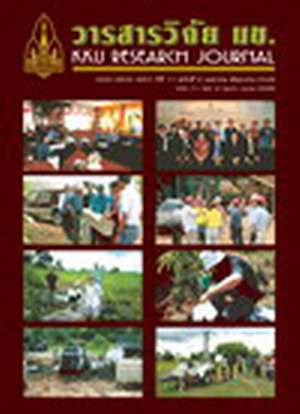Bacteria involved with luminescent vibriosis in giant freshwater prawn hatcheries(Thai)
Main Article Content
Abstract
Luminescent vibriosis has continuously interrupted the hatchery systems of giant freshwater prawn. From this study we found that most isolates belonged to 3 species of the genus Vibrio, a rod-shaped gram negative bacterial group, i.e. V. cholerae, V. parahaemolyticus and V. mimicus. V. cholerae were isolated dominantly from diseased shrimp. Another gram negative bacteria, Aeromonas hydrophila, was occasionally found contaminating shrimp specimens. In a study of homogeneity by DNA-DNA hybridization, results showed large variations both within the same species and among the different species. Considering growth conditions, the 3 Vibrio species showed good growth with temperature range of 25-35o C, salinity 10-30 ppt, pH 5.0-9.0, and even with 2 mg/l NH3 dissolved. From susceptibility test, all Vibrio isolates were susceptible to chloramphenicol and streptomycin, but had intermediate resistance to oxytetracycline, an antibiotic commonly recommended for
control of Luminescent disease in giant freshwater prawn hatcheries. In pathogenicity tests on juvenile and female brood stock, V. cholerae revealed clear high virulence compared to the others by causing high mortality both in juvenile and female brood stock. However, the 4 tested isolates affected mortalities of juvenile and female brood stock at various degrees.


